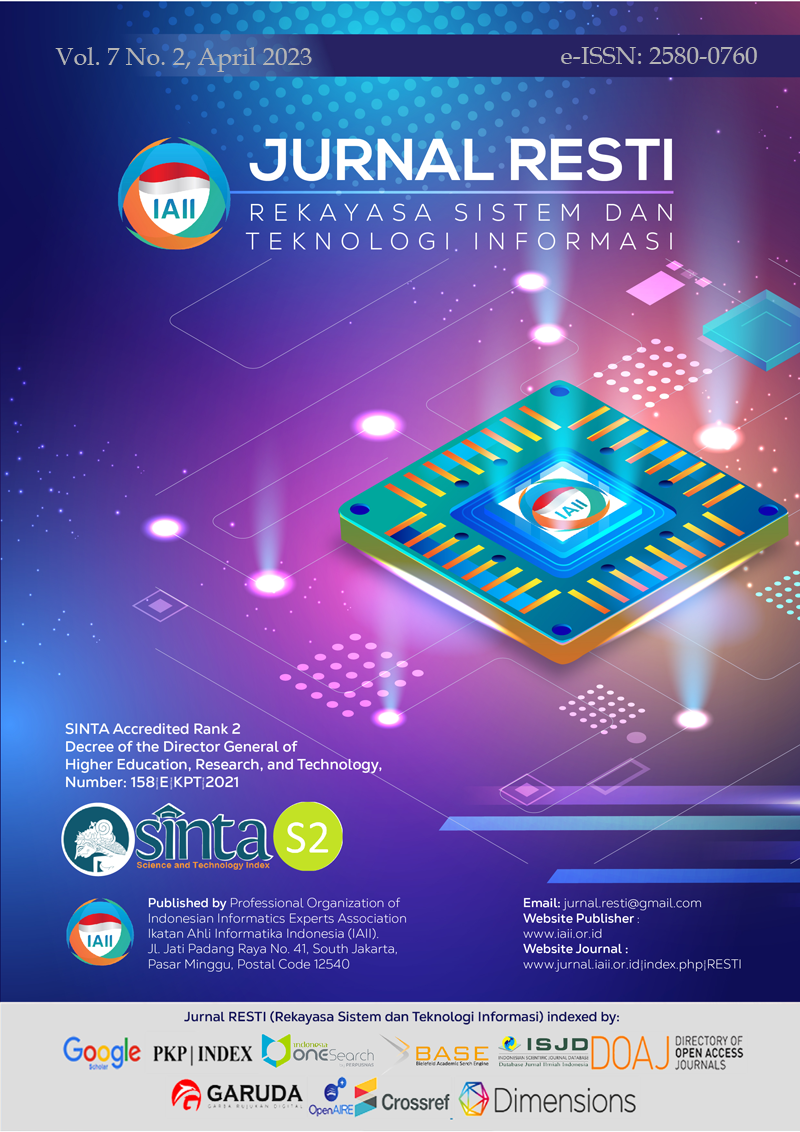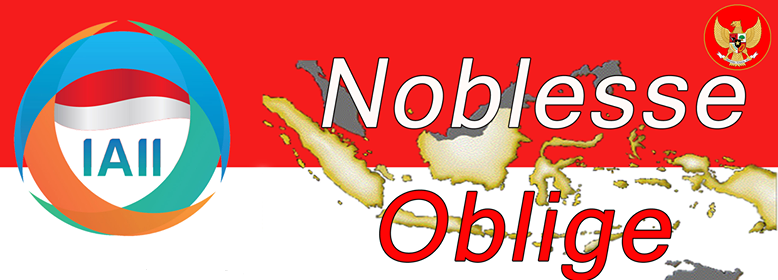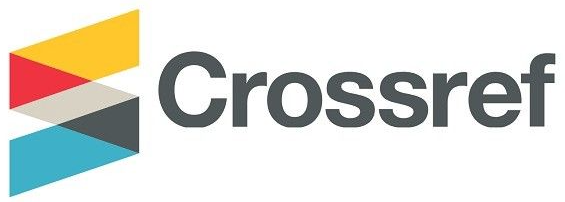Implementation of Naïve bayes Method for Predictor Prevalence Level for Malnutrition Toddlers in Magelang City
Abstract
Nutritional status is an important factor in assessing the growth and development rate of babies and toddlers. Cases of malnutrition are increasing, especially in magelang city. Because nutritional problems (Malnutrition) can affect the health of toddlers. Therefore, this study aims to predict the level of prevalence of malnutrition with the Naïve Bayes method. This research uses an observational design, a single center study at the Magelang City Office, using the Naïve bayes method which is used as an application of time series data, and is most widely used for prediction, especially in data sets that have many categorical or nominal type attributes. The Naïve bayes method is used to predict such cases of malnutrition. The results of this study show that the Naïve Bayes method succeeded in predicting the magnitude of cases of malnourished toddlers in Magelang City with an accuracy percentage of 75% due to the very minimal amount of training data, and the areas that have the most malnutrition are in three areas, namely Magersari, North Tidar and Panjang.
Downloads
References
A. Alpin, W. O. Salma, and R. Tosepu, “Faktor-Faktor Yang Memengaruhi Kejadian Gizi Buruk Pada Balita Dimasa Pandemik Covid-19 Di Wilayah Kerja Puskesmas Tawanga Kabupaten Konawe Provinsi Sulawesi Tenggara,” J. Ilm. Obs. J. Ilm. Ilmu Kebidanan Kandung. P-ISSN 1979-3340 e-ISSN 2685-7987, vol. 13, no. 3, pp. 1–10, 2021.
R. Ambarwati and S. P. Hastono, “Pemodelan Faktor-faktor yang Mempengaruhi Balita Gizi Buruk di Provinsi Jawa Barat Tahun 2017 dengan Pendekatan Spatial Autoregressive Model (SAR),” J. Ilmu Kesehat. Masy., vol. 9, no. 02, pp. 121–128, 2020.
D. Ayu, N. Wulandari, and N. Merlina, “A Comparison Tsukamoto and Mamdani Methods in Fuzzy Inference System for Determining Nutritional Toddlers,” 2018 6th Int. Conf. Cyber IT Serv. Manag., no. Citsm, pp. 1–7, 2018.
R. Nurida and E. Sugiharti, “Implementation of Fuzzy K-Nearest Neighbor Method in Decision Support System for Identification of Under-five Children Nutritional Status Based on Anthropometry Index,” vol. 1, no. October, pp. 83–89, 2019.
Stunting.go.id, “Tahun 2022 Angka Prevalensi Stunting Harus Turun Setidaknya 3%,” Stunting.go.id, 2022. .
Gusti Ayu, “Gambaran Asuhan Keperawatan Pada Balita Gizi Kurang Dengan Defisit Nutrisi Di Upt Kesmas Tegallalang I,” Gambaran Asuhan Keperawatan Pada Balita Gizi Kurang Dengan Defisit Nutr. Di Upt Kesmas Tegallalang I, 2018.
Samsir et al., “Naives Bayes Algorithm for Twitter Sentiment Analysis,” J Phys Conf Ser, vol. 1933, no. 1, p. 012019, 2021, doi: 10.1088/1742-6596/1933/1/012019.
Rokom, “Status Gizi Balita dan Interaksinya,” 16 Februari, 2017. .
Setiaji, “Arah kebijakan transformasi digital bidang Kesehatan,” pp. 1–21, 2021.
A. Desiani, S. Yahdin, and D. Rodiah, “Prediksi Tingkat Indeks Prestasi Kumulatif Akademik Mahasiswa dengan Menggunakan Teknik Data Mining,” J. Teknol. Inf. dan Ilmu Komput., vol. 7, no. 6, p. 1237, 2020.
M. M. Islam et al., “Application of machine learning based algorithm for prediction of malnutrition among women in Bangladesh,” Int. J. Cogn. Comput. Eng., vol. 3, no. January, pp. 46–57, 2022.
A. D. Afifaturahman and F. MSN, “Perbandingan Algoritma K-Nearest Neighbour (KNN) dan Naive Bayes pada Intrusion Detection System (IDS),” Innov. Res. Informatics, vol. 3, no. 1, pp. 17–25, 2021.
T. T. Ramanathan, J. Hossen, and S. Sayeed, “Naïve Bayes Based Multiple Parallel Fuzzy Reasoning Method for Medical Diagnosis,” J. Eng. Sci. Technol., vol. 17, no. 1, pp. 472–490, 2022.
S. Kanwal, F. Khan, and S. Alamri, “A multimodal deep learning infused with artificial algae algorithm – An architecture of advanced E-health system for cancer prognosis prediction,” J. King Saud Univ. - Comput. Inf. Sci., vol. 34, no. 6, pp. 2707–2719, 2022.
H. Thakkar, V. Shah, H. Yagnik, and M. Shah, “Comparative anatomization of data mining and fuzzy logic techniques used in diabetes prognosis,” Clin. eHealth, vol. 4, pp. 12–23, 2021.
Magelang Ekspress, “Stunting Kota Magelang,” 2022. [Online]. Available: https://magelangekspres.disway.id/read/649509/berhasil-turunkan-hingga-117-persen-angka-stunting-kota-magelang-tersisa-10-persen.
Dinas Kesehatan, “Open Data Kota Magelang.”.
F. F. Zain, “Effectiveness of Naïve Bayes Weighted SVM Method in Movie Review Classification,” vol. 5, no. 2, pp. 108–114, 2019.
J. W. G. Putra, “Pengenalan Konsep Pembelajaran Mesin dan Deep Learning,” Comput. Linguist. Nat. Lang. Process. Lab., vol. 4, pp. 1–235, 2019.
S. R. Niko Suwaryo1, Ismasari Nawangsih2, “Deteksi Serangan pada Intrusion Detection System ( IDS ) untuk Klasifikasi Serangan dengan Algoritma Naïve Bayes, C.45 dan K-NN dalam Meminimalisasi Resiko Terhadap Pengguna,” Angew. Chemie Int. Ed. 6(11), 951–952., pp. 2013–2015, 2021.
T. Rosandy, “Perbandingan Metode Naive Bayes Classifier dengan Metode Decision Tree Untuk Menganalisa Kelancaran Pembiayaan,” J. TIM Darmajaya, vol. 02, no. 01, pp. 52–62, 2016.
Copyright (c) 2023 Jurnal RESTI (Rekayasa Sistem dan Teknologi Informasi)

This work is licensed under a Creative Commons Attribution 4.0 International License.
Copyright in each article belongs to the author
- The author acknowledges that the RESTI Journal (System Engineering and Information Technology) is the first publisher to publish with a license Creative Commons Attribution 4.0 International License.
- Authors can enter writing separately, arrange the non-exclusive distribution of manuscripts that have been published in this journal into other versions (eg sent to the author's institutional repository, publication in a book, etc.), by acknowledging that the manuscript has been published for the first time in the RESTI (Rekayasa Sistem dan Teknologi Informasi) journal ;







